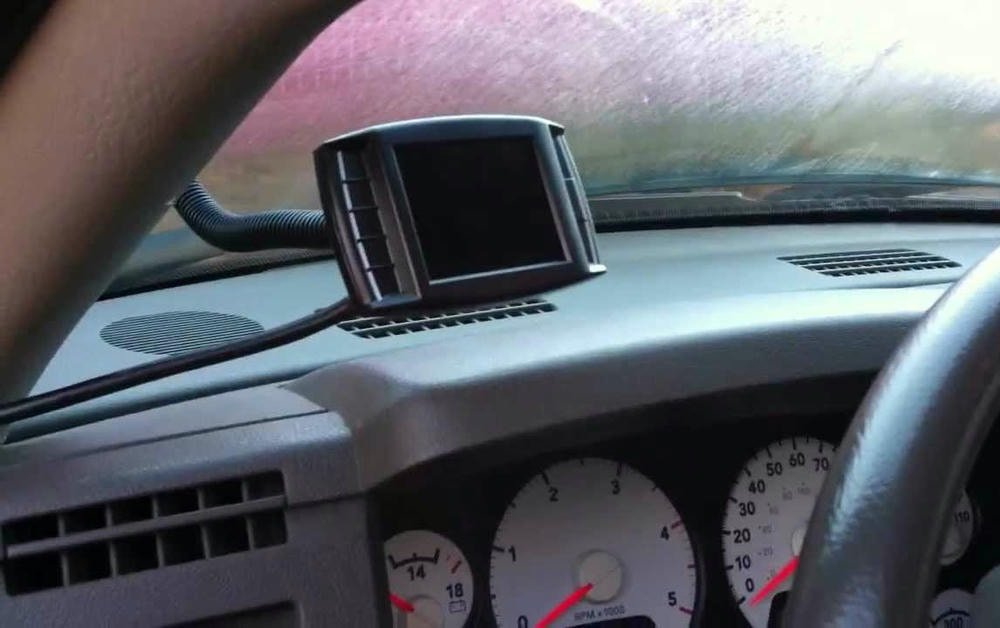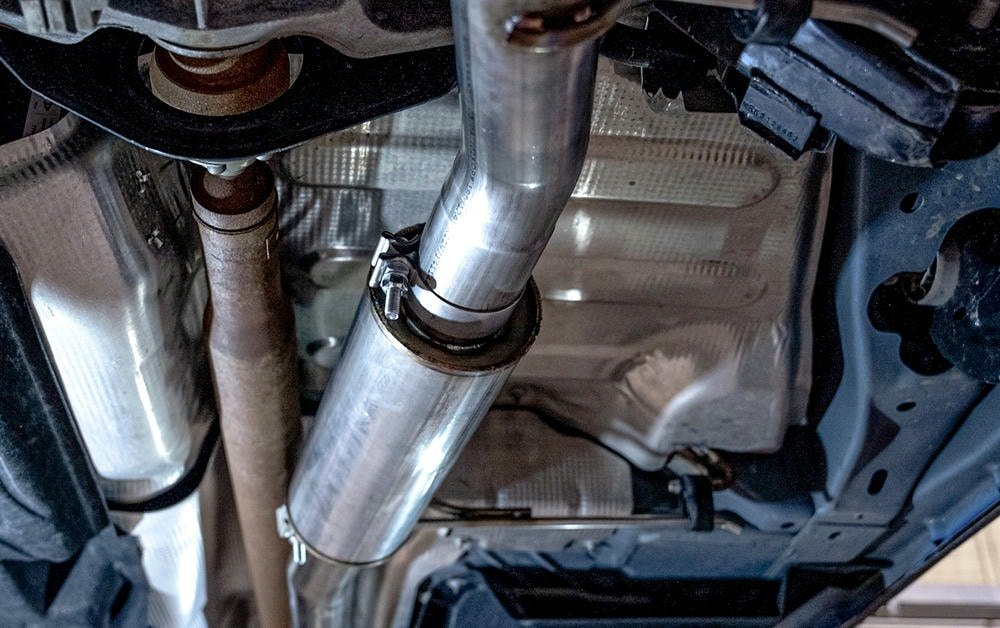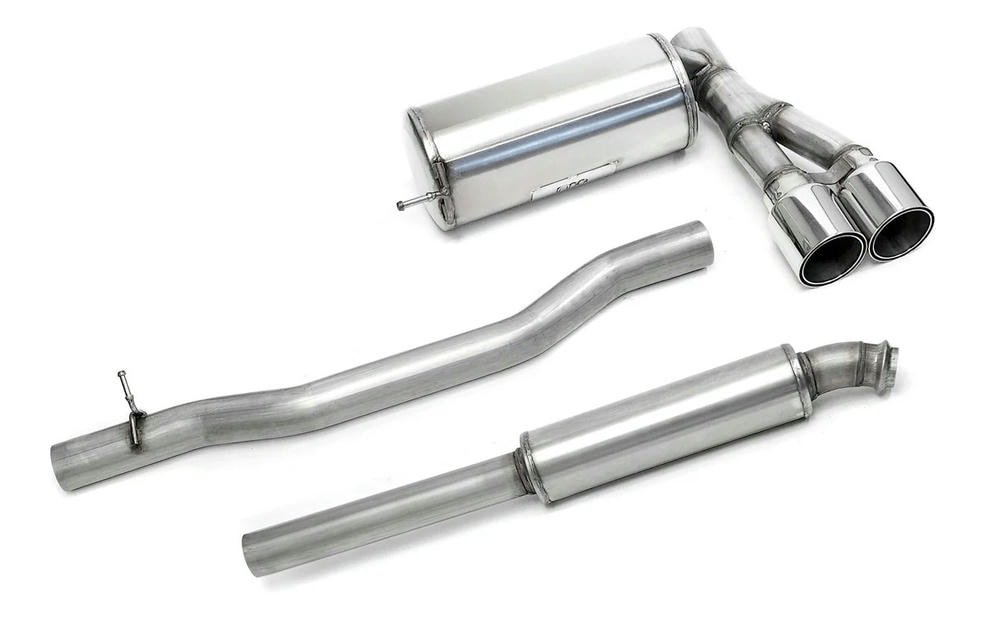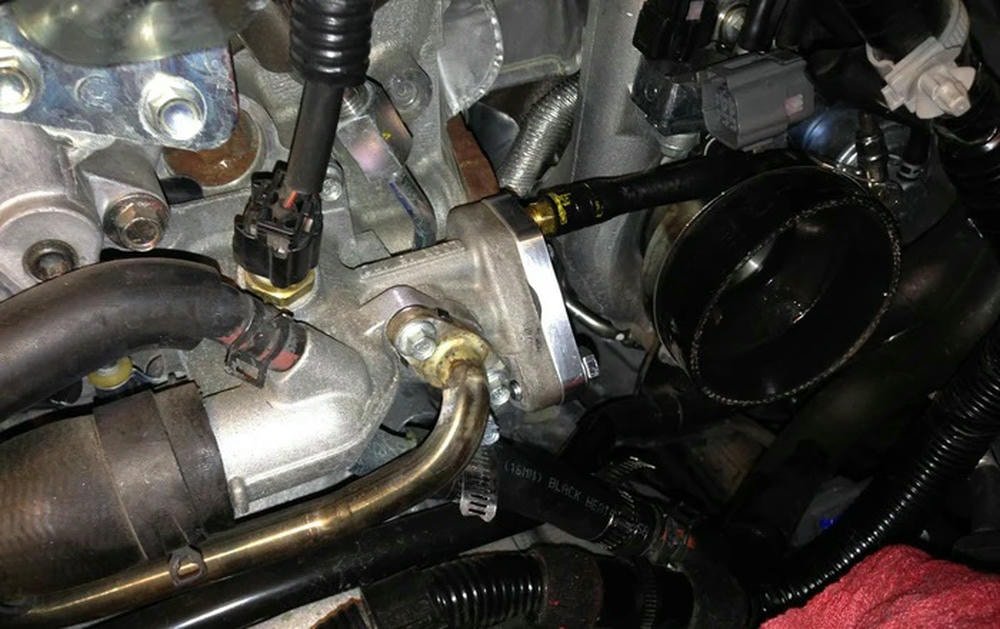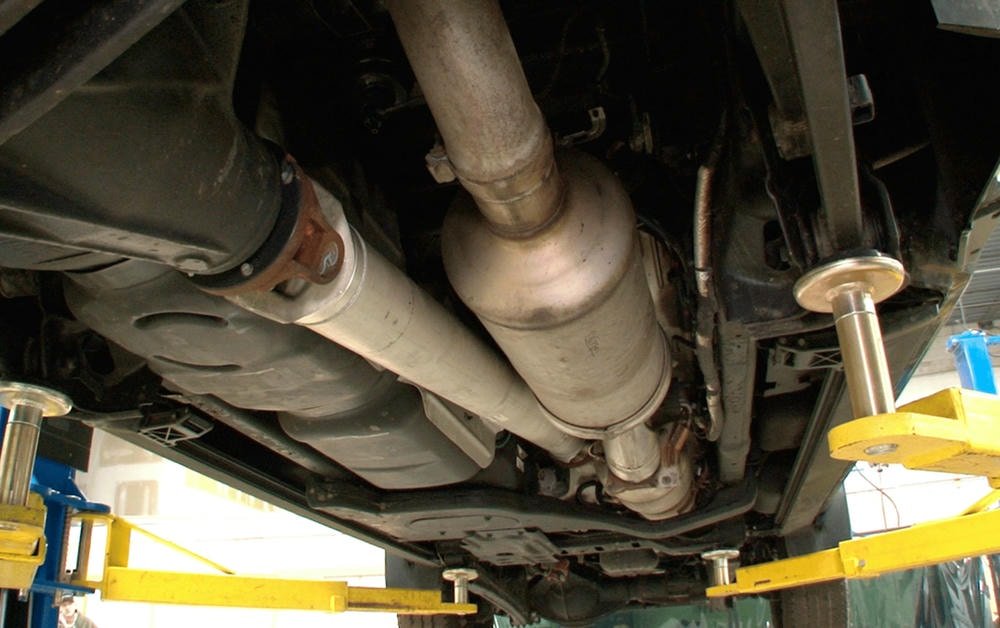Installing a delete tuner in your diesel truck can boost engine performance. This process requires tools like wrenches and a computer, along with safety gear for protection. The steps include connecting the tuner, programming the truck’s engine control unit (ECU), testing the system, and making final checks.
After installation, it’s important to watch how your truck runs and use diagnostic tools for any trouble codes. If you face issues like error messages or less fuel economy, checking your work or adjusting settings may help.
Keeping your vehicle in good shape means regular monitoring with the new tuner setup. Let’s learn how to do this right.
Índice
TogglePreparation for Installation
Getting ready to install a delete tuner means gathering the right tools and making sure you are safe. Make sure your vehicle is ready and you know the first steps.
Required Tools and Materials
Installing a delete tuner in your diesel truck requires the right set of tools and materials. Here’s what you need to get started:
- Delete Tuner Kit: This is the main component. It overrides the factory settings on your truck’s engine for better performance.
- Laptop or Computer: You’ll need this to download the tuning software or to make adjustments to your vehicle’s Electronic Control Unit (ECU).
- OBDII Scanner: This tool connects to your vehicle’s On-Board Diagnostics port. It helps read and clear trouble codes during installation.
- Screwdrivers: A set of flathead and Phillips screwdrivers will come in handy for removing panels or parts in the engine bay.
- Socket Wrench Set: These are crucial for tightening or loosening bolts and nuts in your vehicle.
- Torque Wrench: Ensures that all bolts are tightened to the manufacturer’s specifications, avoiding damage.
- Wire Strippers and Crimpers: If any wiring work is needed during installation, these tools will be necessary.
- Zip Ties: Useful for securing wires or hoses out of the way after installation.
- Flashlight or Headlamp: Provides extra light, making it easier to see in dim areas under the hood or dashboard.
- Work Gloves: Protects your hands from sharp edges and dirt while working on your truck.
- Safety Glasses: Keeps your eyes safe from debris while performing any mechanical work.
- Multimeter: Checks for electrical connections and ensures they are working correctly before and after installation.
Every item on this list plays a role in a smooth delete tuner installation process, ensuring rendimiento mejorado of diesel trucks like Ford Powerstroke, Dodge Cummins, or Chevy Duramax engines.
Safety Precautions
Before starting a DIY delete tuner installation on diesel trucks, owners must take safety seriously. It’s crucial to follow these steps to prevent accidents and damage.
- Wear protective gear such as gloves and safety glasses. This keeps hands and eyes safe from sharp objects and any harmful substances.
- Disconnect the battery before beginning work. This step prevents electrical shocks or unwanted power strokes while handling the engine’s electrical components.
- Keep a fire extinguisher nearby. Working on engines involves flammable materials, so having an extinguisher within reach is smart.
- Use proper tools for the job, including wrenches and screwdrivers that fit correctly. Incorrect tools can cause injury or damage to parts.
- Work in a well-ventilated area to avoid inhaling exhaust fumes or vapors from the fuel system of diesel trucks like F350 or F450 models.
- Follow instructions carefully when programming the ECU with tuning software installation. Mistakes here can lead to serious engine problems.
- Securely jack up the vehicle if required, using jack stands for support and ensuring it’s stable before getting underneath.
- Double-check connections after installing tuning devices or making custom tuning setups to ensure everything is tight and correct.
Following these safety precautions helps protect DIYers working on their diesel trucks, bringing better performance through delete tuner installations without risking harm or errors during the process.
Vehicle Preparation and Initial Steps
Getting a diesel truck ready for delete tuner installation calls for careful preparation. Owners need to gather the right tools and ensure safety measures are in place. Here’s how to prep your vehicle:
- Park the truck on flat ground. Make sure it’s secure.
- Disconnect the battery to prevent any electrical shorts.
- Locate the engine control unit (ECU) in your vehicle; different models have it in various places.
- Clean around the ECU area. This prevents dirt from getting inside during work.
- Gather all necessary tools for the job, including screwdrivers, wrenches, and a computer with tuning software.
- Cover exposed seats and interiors with cloth to keep them clean.
- Read through the delete tuner manual thoroughly before starting.
- Check if your model needs specific adapters or connectors for installation.
- Ensure you have a stable internet connection if tuner programming requires online support.
- Prepare a notepad or digital device to record any error codes that may appear during testing.
This process involves not just physical tools but also readiness to tackle any troubleshooting issues that might come up during installation or programming of the delete tuner in diesel trucks like Power Stroke engines found in Fords or Duramax engines in GM vehicles such as Chevrolets and GMCs.
Proceso de instalación paso a paso
Installing a delete tuner involves careful steps to ensure your diesel truck runs smoothly. First, you’ll connect the device to your vehicle’s computer system, then program the engine control unit (ECU) for better performance.
Testing ensures everything works right before making final adjustments.
Connecting the Delete Tuner
To connect a delete tuner to a diesel truck, one first needs to locate the diagnostic port. This is usually found under the dashboard on the driver’s side. Make sure the vehicle is turned off before connecting the tuner.
Use a cable that comes with your tuning device kit. Plug one end into the tuner and the other end into the diagnostic port.
Connecting is straightforward: match up, plug in, and you’re ready to start.
Once connected, turn on both your vehicle and the delete tuner. The screen on your tuning device will light up and show instructions for programming or checking rendimiento del motor mods.
It’s important to follow these steps carefully to ensure correct setup.
During my time working with power stroke diesel engines from brands like Ford and Chevrolet, I’ve learned that careful connection ensures successful programming later on. The process might seem simple but requires attention to detail for smooth operation of your turbocharged engine after installation.
Programming the ECU
Programming the ECU is a critical step in delete tuner installation. First, ensure the vehicle is secure and the battery is disconnected to prevent any electrical issues. Use specific software designed for tuning diesel engines, as this allows for adjustments that suit turbocharged engine tuning.
The process involves connecting a laptop or another device with the right tools to the vehicle’s diagnostic port. This port lets you access the Engine Control Unit (ECU), which controls how the engine runs.
Once connected, select options that remove limits set by manufacturers on emissions and performance. This might include changes to fuel injection timing or boost pressure from the turbocharger.
Following instructions carefully avoids errors that could harm your vehicle’s engine or overall performance. After programming, reconnect everything and prepare for testing to ensure successful diesel tuning setup modifications have been made.
Testing the System
After installing the delete tuner, the diesel truck owner must test the system to ensure it works well. This involves starting the vehicle and closely monitoring its performance. Look for any unusual sounds or behaviors in the engine.
Utilice un diagnostic tool to check for error codes that might suggest problems with the installation.
Owners should take their truck for a short drive to see how it behaves on the road. Pay attention to acceleration and overall engine performance. This real-world test helps identify any issues missed during initial checks.
After testing, recheck all connections and settings to confirm everything is correct and secure. If there are problems, revisiting steps from the tuning device fitting guide may be necessary to fix them.
Final Adjustments and Checks
Run the engine and listen carefully. Look for any strange noises that were not there before. This is a key step in DIY tuning mods for diesel trucks. Use diagnostic tools to check if there are error messages from the ECU.
These tools help find problems you can’t see or hear.
Check all connections again to make sure they are tight and right where they should be. Loose wires can cause big problems later on. Take the truck for a short drive at different speeds.
Pay attention to how it feels and sounds when you accelerate.
A well-tuned truck runs smoothly, so trust your senses.
Post-Installation Considerations
After installing a delete tuner, keeping an eye on how your diesel truck runs is key. You might need to solve some issues that pop up.
Monitoring Performance
After installing a delete tuner in a diesel truck, it is crucial to keep an eye on how the vehicle performs. This means checking eficiencia de combustible and power output. Many owners use onboard diagnostic tools to read codes and monitor engine data.
This helps them see if there are any problems and assess the impact of the tune.
One owner shared that after tuning his Saturn, he noticed an immediate improvement in horsepower but kept a logbook to track performance over time. He used software like On-Board Diagnostics (OBD) scanners to watch for engine warnings.
Regular checks help catch issues early, ensuring the truck runs smoothly and efficiently.
Addressing Common Installation Issues
Installing a delete tuner in a diesel truck helps improve performance but can come with challenges. Owners often face common issues that can affect the success of the installation.
- Error Codes: The truck’s computer might show error codes after installing the delete tuner. To fix this, use an OBD-II scanner to identify and clear the codes. If they return, check the installation for mistakes.
- Decreased Fuel Economy: Some owners notice their trucks use more fuel after tuning. This usually means the tuner settings need adjustment. Consult the tuner’s manual to find the best setting for fuel efficiency.
- Power Loss: If the truck feels weaker after tuning, it could be due to incorrect installation or wrong settings. Double-check all connections and make sure you selected the correct program for your vehicle’s needs.
- Starting Trouble: Difficulty starting the truck might happen if the ECU (Engine Control Unit) can’t communicate properly with the tuner. Ensure all cables are connected securely and that you’ve followed all programming steps correctly.
- Software Glitches: Tuners sometimes have software issues that cause problems with vehicle operation. Updating the tuner’s software to the latest version can resolve these glitches.
- Check Engine Light: This light might turn on if there’s an issue with how the delete tuner is interacting with your truck’s systems. Use an OBD-II scanner to diagnose the problem, then consult your tuner’s troubleshooting guide for solutions.
- Overheating Issues: An incorrectly installed tuner can cause your engine to run hot. Make sure you’re monitoring engine temperatures closely during and after installation and adjust settings as necessary to prevent overheating.
- Exhaust Problems: Improperly installed delete tuners may lead to exhaust system issues, including increased noise or smoke output. Revisit installation steps related specifically to any components removed or bypassed as part of your tune-up process.
Conclusión
Experts say installing delete tuners is a big step for propietarios de camiones diesel. John Smith, with 20 years in car tech, stands out here. He studied engine systems and worked on many projects.
His work helps trucks run better.
John talks about the tuner’s design. He says it lets trucks use less fuel and gives more power. This matches science that shows how tuning changes engine behavior.
Safety comes first with John. He notes these tuners meet rules and are safe to use. Being open about how they change the truck is key, he adds.
For daily use, John suggests checking the truck often to see how it’s doing with the tuner. It makes sure everything works right.
He sees good and bad sides. The pro is better truck performance; the con is needing regular checks to avoid issues. Compared to others, this choice depends on what a truck owner needs.
John’s final word? For those wanting less fuel use and more power from their diesel trucks, delete tuners are worth it but need careful handling.
Preguntas frecuentes
What is a delete tuner and how does it work?
A delete tuner is a device used in tuning installation for vehicles like Pontiac, Oldsmobile, Buick, Lincoln, and Mercury. It’s designed to modify the engine control unit (ECU) settings of these cars for enhanced performance.
Can you provide some tips on installing delete tuners?
Sure! First off, gather all necessary installation tools. Make sure your vehicle is turned off before starting the process. Follow the instructions provided in the delete tuner installation guide carefully to ensure proper setup.
Do I need an auto mechanic to install a delete tuner?
While having an auto mechanic can be helpful due to their expertise, it’s not always necessary if you’re comfortable with automotive tasks. The key is following the provided delete tuner installation guide closely and ensuring that every step is completed correctly.
Are there any specific precautions one should take while installing a delete tuner?
Absolutely! Ensure that your car’s battery has enough charge during tuning installation because this process might require power from it. Also remember not to force any connections as this could damage parts of your car or even the new equipment itself.

